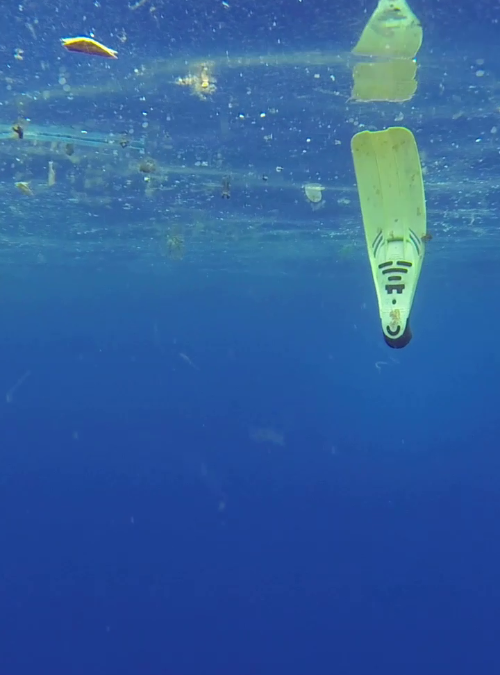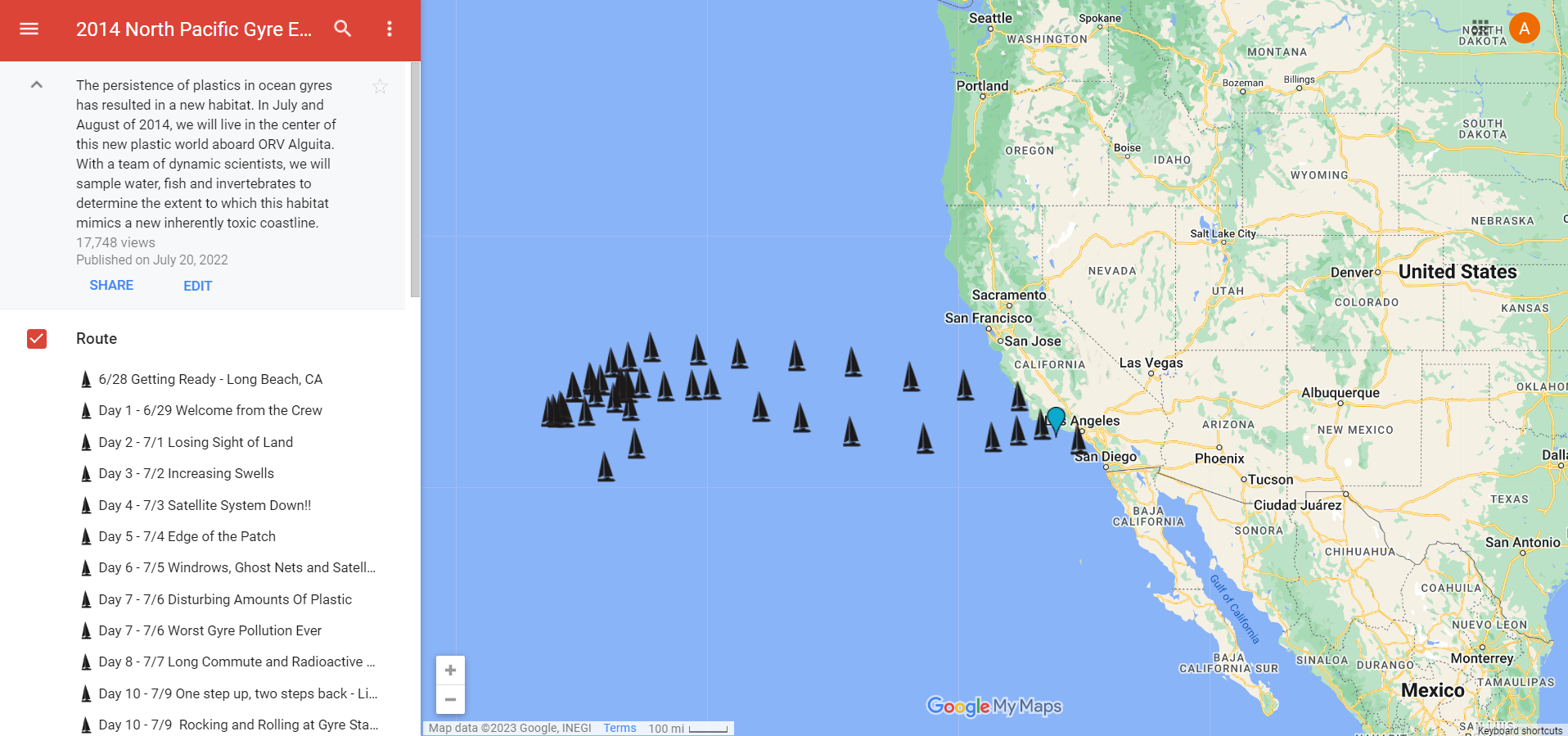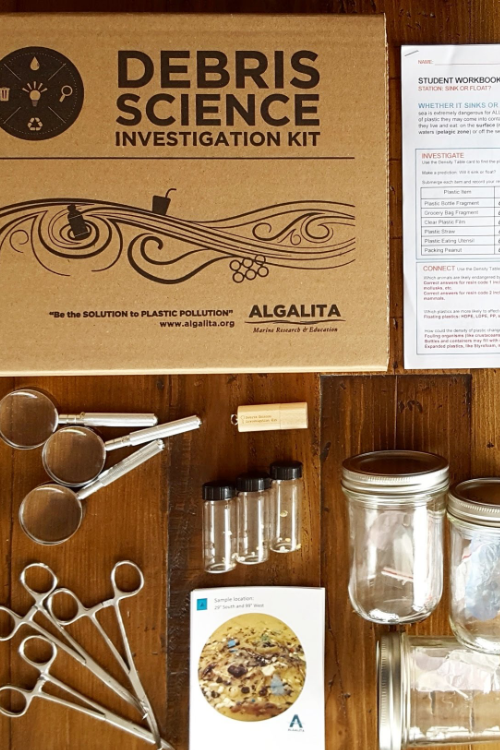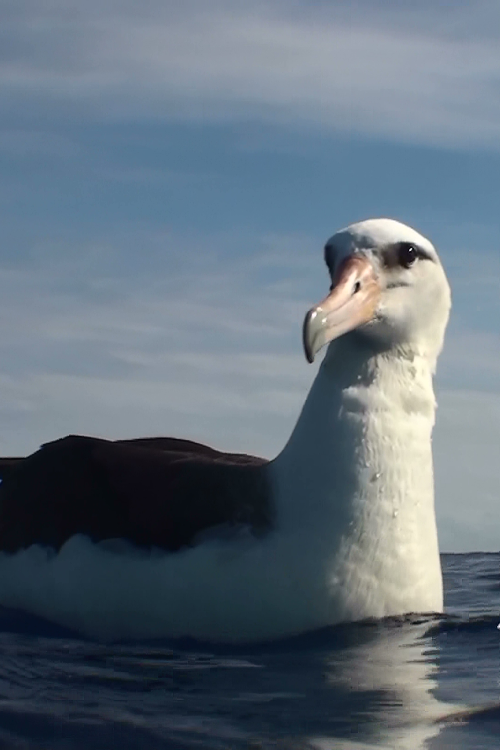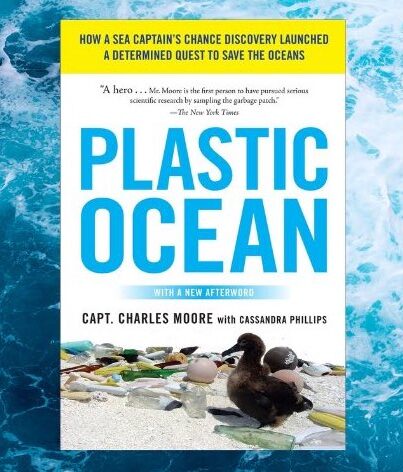
This video was taken by Dale Selvam, first mate on board Algalita’s research vessel. He dove into the deep open ocean with a snorkel and underwater camera during an Algalita expedition in 2014.
This map shows where the video above was taken on Day 36 of the expedition. You can click the map to find the location of the sailboat on Day 36. You can also follow along with the whole expedition by reading the crew’s logbook. Here’s an excerpt by Captain Charles Moore that documents his thoughts on that particular day when they shot the underwater video.
“After nearly five weeks of hard work getting out here to the North Pacific accumulation zone and repeat sampling our original 1999 transect of 11 random trawl stations in both rough and calm conditions, we are finally heading for home. Each hour brings us closer to friends, family and colleagues on the mainland, as we note the shrinking of the thousand plus miles we still need to travel in our deck log. We are travelling due north to avoid the headwinds generated to the south by hurricane Iselle in order to reach the area near the 40th parallel where the northeast trades transition to the westerly winds that will bring us safely to port in Long Beach. For me, working in this area for the 10th time, it has been an opportunity to contemplate why I have actually come to love this place—this place so plagued by plastic trash that at times it seems we have stumbled onto the mouth of the Los Angeles River after a rainstorm. Have you ever seen a rainbow without a bow?—flat against the surface of the sea, and then seen it dip into the sea itself and color the water rainbow colors? I have—out here in the gyre. Have you seen the night sky so dark and bright that the Milky Way reflects the luminescent highway of our spiral galaxy on the mirror calm sea, and each bright star shows a sliver of light across the deep as it sets in west like the sun it is in its own right? Have you dove at night into three mile deep water to swim with creatures so delicate that they cannot be moved to an aquarium—they can only be observed in their incredible complexity in situ, with their transparent bodies sporting curtains of arms and tentacle structures arrayed in patterns beyond belief yet repeated in each individual? This is the habitat of an ocean desert, yet different from a terrestrial desert in that it draws the young of many species to mature here safe from predators. Baby turtles come here to reach the juvenile stage. On this trip we discovered a ball of feeding juvenile Slender mola, a strange fish if there ever was one-jet propelled through a fixed circular mouth and side thrusters with counter rotating tail fins. Their skin is as metallic as living tissue can be made by natural means. Small whales and large dolphins of unknown species breach to look at us but once — out of sheer curiosity– and move on. Windrows formed by slabs and cylinders of water that accumulate dead and dying plankton and bring it to the surface and entice albatross, tropic birds and sharks to feed amongst the incredibly diverse plastic garbage that bulks out this planktonic soup.
Captain Dale dove in to inspect one of these yellow-green, soupy windrows of trash and plankton and came back with an extra fin like we wear for snorkeling, chosen from the thousands of pieces of plastic that made this the worst polluted windrow I have ever seen.
The fin bore the logo of Body Glove, a local Los Angeles company founded by two lovers of the ocean, the Meistrel brothers, but the writing on the back said “Quality Product of Italy-DIN 7878 A.” It was green with a black rubbery heel that was missing much of its shape by having pieces bitten off—the feel of the material was definitely squidlike.”
Scientists use observation as a tool for understanding our world. Observing a phenomenon can spark questions which we can use to design experiments, analyze connections, or find patterns. It can also help us talk about and define a problem more clearly.
Observing plastics in the open ocean through video, can help us understand the scale, sources, and implications of this environmental problem. By taking a virtual tour through a plastic accumulation zone, we can see that instead of a forming dense mass or “island”, plastic ocean pollution looks more like a thin soup or smog.
Is there really a floating island of trash in the ocean?
The “Great Pacific Garbage Patch” is the term often used to describe the plastic accumulating in the North Pacific Ocean. But, you can’t see the “patch” from space, swim under it or walk on it. If it were an island, that would be great – it could probably be removed! Rather than a dense patch of plastic items floating in a defined space, the plastic items that enter the oceans fragment into small plastic particles called microplastics that spread throughout the water. Many float near the surface where they mix in with the plankton. Others slowly sink to the seafloor [1] and some get trapped in sea ice [2].
How is plastic pollution impacting the ocean?
Plastic in the oceans is changing all habitats of the ocean. It’s providing surfaces for things to grow on and fish and other creatures to shelter under from predators. It can also increase the spread of invasive species, allowing animals to cross the ocean to a new habitat where they have no predators and can disrupt an ecosystem [3]. Because the plastic pieces are so small and dispersed across thousands of miles and throughout the depths of the oceans, removing them is nearly impossible. Preventing more plastic pollution is the better approach.
What’s that?
Some things in the video might be unfamiliar. Here are a few things to look out for as you watch.
- The greenish, fuzzy stuff floating in the water is actually algae and plankton – the living organisms that SHOULD be there.
- You might see some small white/clear beads which are plastic resin pellets used to manufacture other plastic products. They are plastic pollution that comes from companies who make plastic stuff.
- There are also some plastic items that are completely covered with mussels and algae – for example the fishing box floating upside down that is hard to recognize because it’s covered with dark green, stringy algae.
- The dark, cone-shaped things that look like baskets are fishing debris from eel-fisheries.
- Pelagic crabs are small swimming crabs that live in the middle of the ocean.
Sources
[1] See Moutinho, S. (2023), Seafloor plastic pollution is not going anywhere, Eos, 104, https://doi.org/10.1029/2023EO230036. Published on 14 February 2023 available at https://eos.org/articles/seafloor-plastic-pollution-is-not-going-anywhere
[2] See Peeken, I., Primpke, S., Beyer, B. et al. Arctic sea ice is an important temporal sink and means of transport for microplastic. Nat Commun 9, 1505 (2018). https://doi.org/10.1038/s41467-018-03825-5 available at https://www.nature.com/articles/s41467-018-03825-5
[3] See Haram, L.E., Carlton, J.T., Centurioni, L. et al. Extent and reproduction of coastal species on plastic debris in the North Pacific Subtropical Gyre. Nat Ecol Evol (2023). https://doi.org/10.1038/s41559-023-01997-y available at https://www.nature.com/articles/s41559-023-01997-y#citeas
Journaling Ideas
- How did what you see in the video differ from what you expected to see?
- What stood out to you?
- How did the video make you feel?
- What would an ocean organism living there be thinking?
- What is something the video made you wonder about?
- What do you want others to know about the video?
- How could we respond to the video with our actions?
Processing overwhelm
Plastic pollution is an overwhelming problem. Only parts of the ocean have this much plastic accumulated in them. It’s important to understand that there are thousands of people and hundreds of organizations working to bring awareness to this issue, and to find ways to reduce human reliance on plastics. There are also many ways that you can get involved. Check out our Actions and Solution Set pages to find a way to get involved that fits for you.
Action is the antidote to overwhelm
Related Resources
Toolkit: A Plastic Ocean Teaching Kit
Investigate the impacts of microplastics on our oceans with 3 rotating activities.
Grades 5 and up
50 minutes
Lesson: Sources and Sinks
How does plastic get into and impact ecosystems?
Grades 4 and up
30 to 60 minutes
Students Take Action!
Support the Break Free From Plastic Pollution Act
Sign your support for this incredible nation-wide bill on plastics.
Explore more
Plastic Pollution Basics
A quick crash course on plastic pollution and what we can do about it!
Learn more
This is Our Ocean: Rope Clump
Explore under the sea with our expedition crew as they investigate a common plastic pollution type - fishing rope.
This is Our Ocean: Massive Aquaculture Debris Clump
Algalita scientists found a massive plastic pollution clump is the size of our research vessel and explored on, under, and around it.
What are lanternfish?
Learn about a little known yet important fish species.
Learn more

